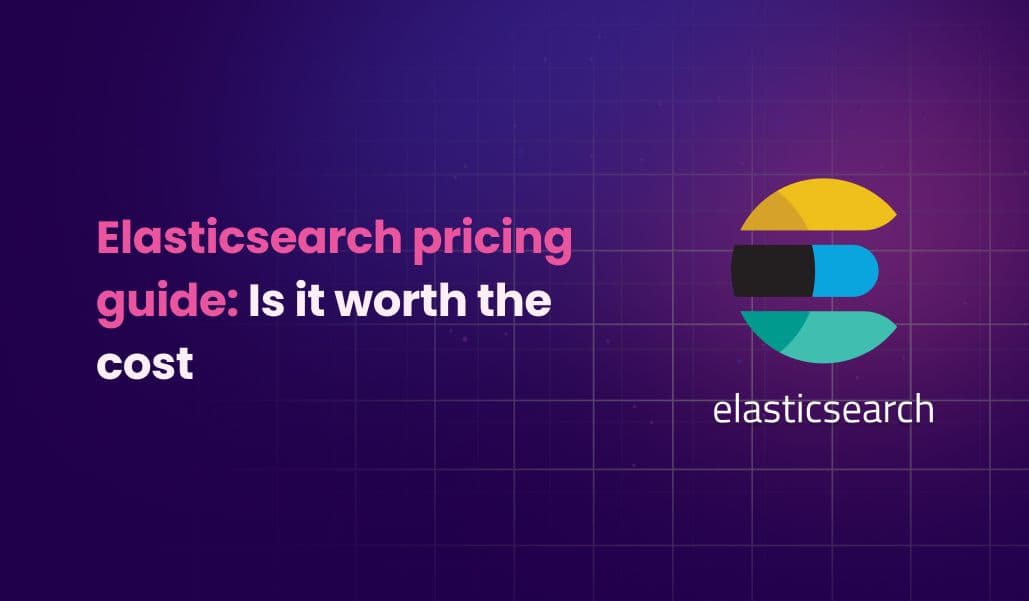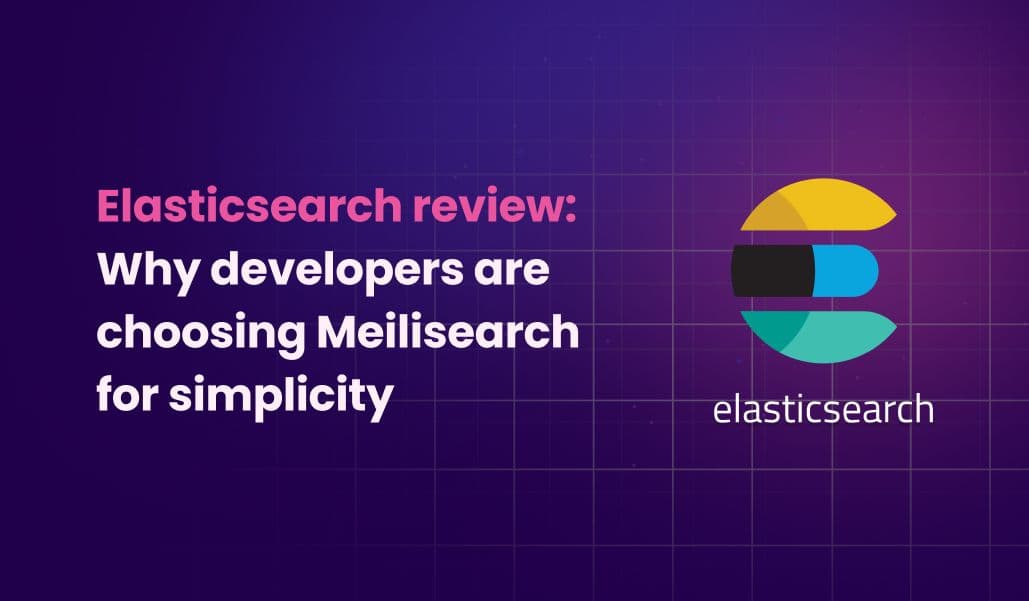Elasticsearch vs Typesense (vs Meilisearch): Which search engine actually fits your needs in 2025?
Compare Elasticsearch's enterprise-scale power, Typesense's developer-friendly speed, and Meilisearch's AI-powered simplicity to find the search engine that matches your needs, team capabilities, and growth trajectory.

In this article
Choosing between Elasticsearch, Typesense, and Meilisearch for your search needs often comes down to these five critical questions:
- Do you need a distributed search solution that can scale across multiple nodes, or would a powerful single-node engine suffice?
- Is your team prepared to invest significant time learning and managing a complex system, or do you need something that works great out of the box?
- Are you building at enterprise scale with billions of documents, or focusing on delivering a fantastic search experience for millions?
- Do you prioritize having every possible feature and configuration option, or would you rather have smart defaults that just work?
- Is your budget focused on infrastructure and expertise, or would you prefer to invest in other areas of your product?
In short, here's what we recommend:
👉🏻 Elasticsearch is the enterprise-grade distributed search platform that powers some of the world's largest deployments. Built on Apache Lucene and developed in Java, it excels at handling massive datasets across clusters, offering unmatched flexibility for complex use cases like log analytics, security monitoring, and full-text search at scale. However, this power comes with significant operational complexity, requiring specialized expertise to configure, tune, and maintain effectively.
👉🏻 Typesense is the developer-friendly search engine built for speed and simplicity. Written in C++, it delivers search results in under 50 milliseconds with built-in typo tolerance and intelligent defaults that work perfectly for most use cases. Typesense offers both single-node and high-availability cluster deployments, handling millions of documents with a straightforward API and minimal configuration requirements that make it ideal for teams who want powerful search without the operational overhead.
Both platforms are excellent open-source solutions, but they represent fundamentally different philosophies. What if you could have the simplicity of Typesense with even more focus on developer experience and modern features?
👉🏻 Meilisearch takes the developer-first approach even further, combining lightning-fast performance with an exceptionally intuitive API and built-in AI capabilities. Written in Rust, it provides typo-tolerant, relevant search results out of the box while offering features like hybrid search that seamlessly blends keyword and semantic search. Though limited to single-node deployments like Typesense, Meilisearch excels at delivering a superior search experience for applications that prioritize user satisfaction over infinite scale.
Elasticsearch vs Typesense vs Meilisearch at a glance
Here's the fundamental difference: While all three are open-source search engines, they target vastly different use cases and operational models.
| Elasticsearch | Typesense | Meilisearch | |
|---|---|---|---|
| Architecture | Distributed, multi-node clusters | Single node, in-memory | Single node, in-memory |
| Primary Language | Java | C++ | Rust |
| Setup Complexity | ⭐⭐ High (cluster management) | ⭐⭐⭐⭐⭐ Very simple | ⭐⭐⭐⭐⭐ Very simple |
| Performance | ⭐⭐⭐⭐ Fast with tuning | ⭐⭐⭐⭐⭐ <50ms out-of-box | ⭐⭐⭐⭐⭐ <50ms out-of-box |
| Scale Limits | ⭐⭐⭐⭐⭐ Billions of documents | ⭐⭐⭐ Millions of documents | ⭐⭐⭐ Millions of documents |
| Typo Tolerance | ⭐⭐⭐ Requires configuration | ⭐⭐⭐⭐⭐ Built-in by default | ⭐⭐⭐⭐⭐ Built-in by default |
| Learning Curve | ⭐⭐ Steep | ⭐⭐⭐⭐ Gentle | ⭐⭐⭐⭐⭐ Very gentle |
| AI/Vector Search | ⭐⭐⭐⭐ Available | ⭐⭐⭐⭐ Available | ⭐⭐⭐⭐⭐ Native hybrid search |
| Use Cases | Enterprise search, logs, analytics | Apps, e-commerce, documentation | Apps, e-commerce, AI-powered search |
| Hosting Options | Self-hosted, Elastic Cloud | Self-hosted, Typesense Cloud | Self-hosted, Meilisearch Cloud |
The fundamental divide: Three approaches to search architecture
The most significant architectural differences between these search engines shape everything else about them, from operational complexity to scaling limits.
Elasticsearch represents the fully distributed approach. Built from the ground up for horizontal scaling, it divides data into shards that are distributed and replicated across nodes. This architecture enables horizontal scaling to billions of documents (subject to hardware costs and good cluster design). When you need to search massive datasets across multiple data centers with automatic failover, Elasticsearch's distributed nature becomes essential.
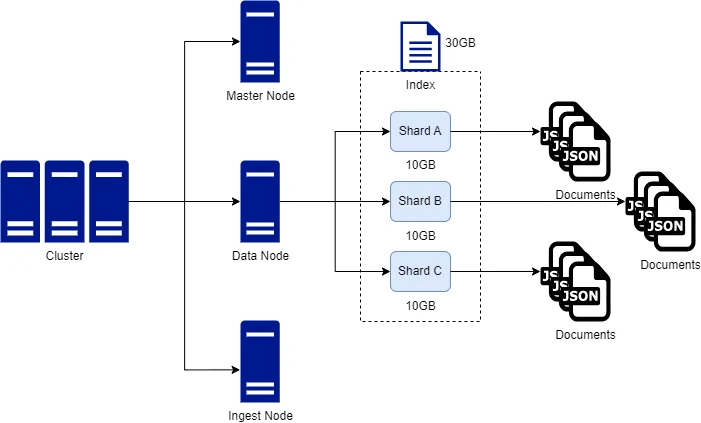 Source: LEARNCSDESIGN
Source: LEARNCSDESIGN
But this power comes with significant complexity. Managing an Elasticsearch cluster requires understanding shard allocation, cluster state, node roles, and index lifecycle management. You'll need to tune JVM heap sizes, configure thread pools, and monitor cluster health. Many organizations dedicate entire teams to Elasticsearch operations.
Typesense takes a middle path with its replicated cluster approach. While it now supports high-availability through Raft consensus, it doesn't shard data. Instead, the entire dataset is replicated to each node. This provides redundancy and failover without the complexity of distributed sharding. You get the reliability benefits of a cluster while maintaining the simplicity of having all data on each node. The trade-off is clear: your dataset must fit on a single node, limiting you to whatever fits on one host (practically tens to hundreds of millions on today’s hardware)
Meilisearch stays true to the single-node philosophy, betting that simplicity and developer experience trump distributed complexity for most use cases. By focusing on what one powerful server can do, like keeping index structures in RAM for instant lookups while persisting data to disk, Meilisearch significantly reduces overhead. Users who need redundancy implement it through traditional approaches like load balancers and active/passive replicas, while the Meilisearch team focuses on perfecting the single-node experience before tackling distribution.
All three approaches make sense for different scenarios. Elasticsearch's complexity is justified when you truly need web-scale search. Typesense's replicated clusters hit a sweet spot for teams wanting high availability without distributed systems expertise. And Meilisearch proves that for many applications, one well-optimized server delivering sub-50ms search is all you need, especially when that simplicity lets you focus on building great search experiences rather than managing infrastructure.
Elasticsearch dominates at scale, but at what cost?
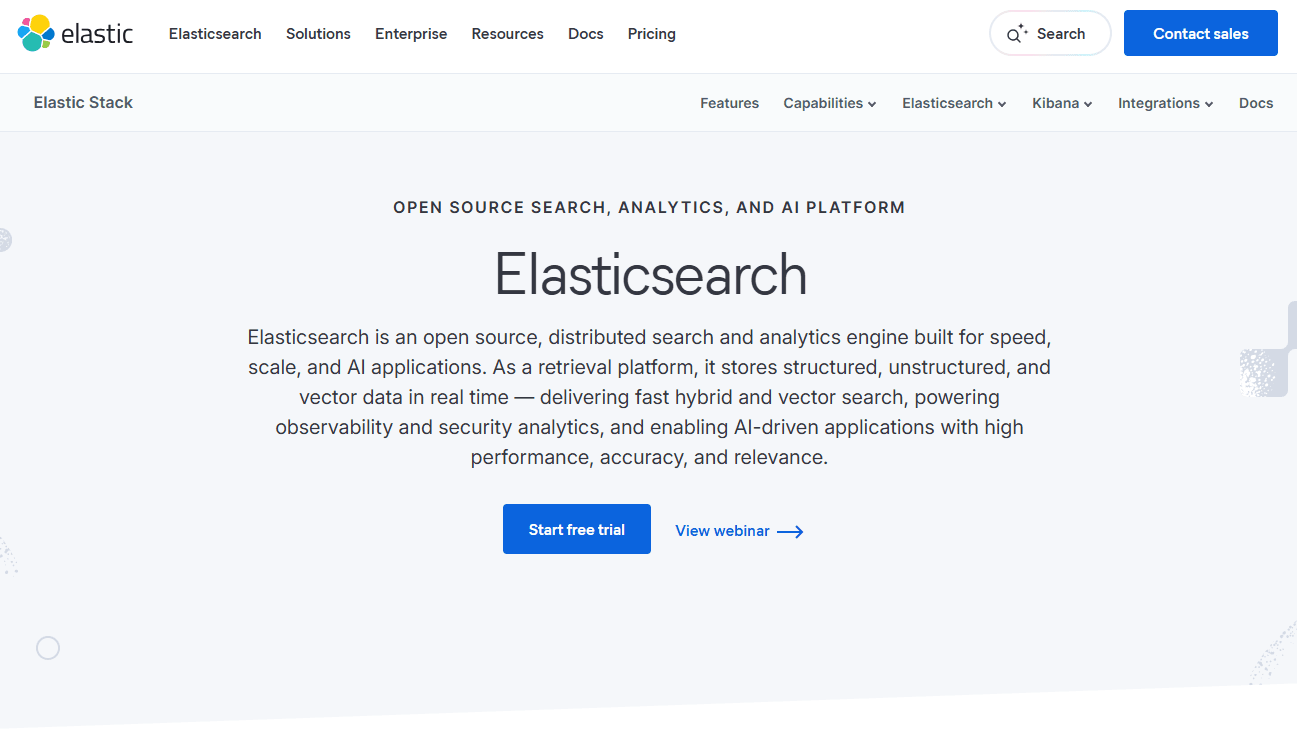
When it comes to handling truly massive datasets, Elasticsearch remains unmatched among these three options. Its distributed architecture isn't just about raw capacity; it's about maintaining performance as data grows.
Which is why major enterprises rely on Elasticsearch for mission-critical workloads at enormous scale. For example, GitHub used it to index over 8 million code repositories comprising more than 2 billion documents. Wikipedia powers its site-wide search with Elasticsearch, while companies like Netflix use it for real-time log analysis and monitoring.
But achieving this scale requires significant investment. First, there's the infrastructure cost. While you can start with a small cluster, production deployments often require multiple master nodes, data nodes, and coordinating nodes. Each needs appropriate resources, and JVM heap management alone can consume considerable time.
Then there's the expertise requirement. Elasticsearch's flexibility means there are countless ways to configure it, and many of them are wrong for your use case. Index mapping, analyzer configuration, query DSL, and aggregation pipelines require a deep understanding to use effectively. The documentation, while comprehensive, reflects this complexity with thousands of pages covering various aspects.
Operational overhead is another hidden cost. Cluster state management, shard rebalancing, index lifecycle policies, and performance tuning require ongoing attention. When things go wrong (and in distributed systems, they will), debugging requires specialized knowledge. Many organizations find they need dedicated Elasticsearch engineers or expensive consultants.
Typesense delivers blazing speed with minimal setup
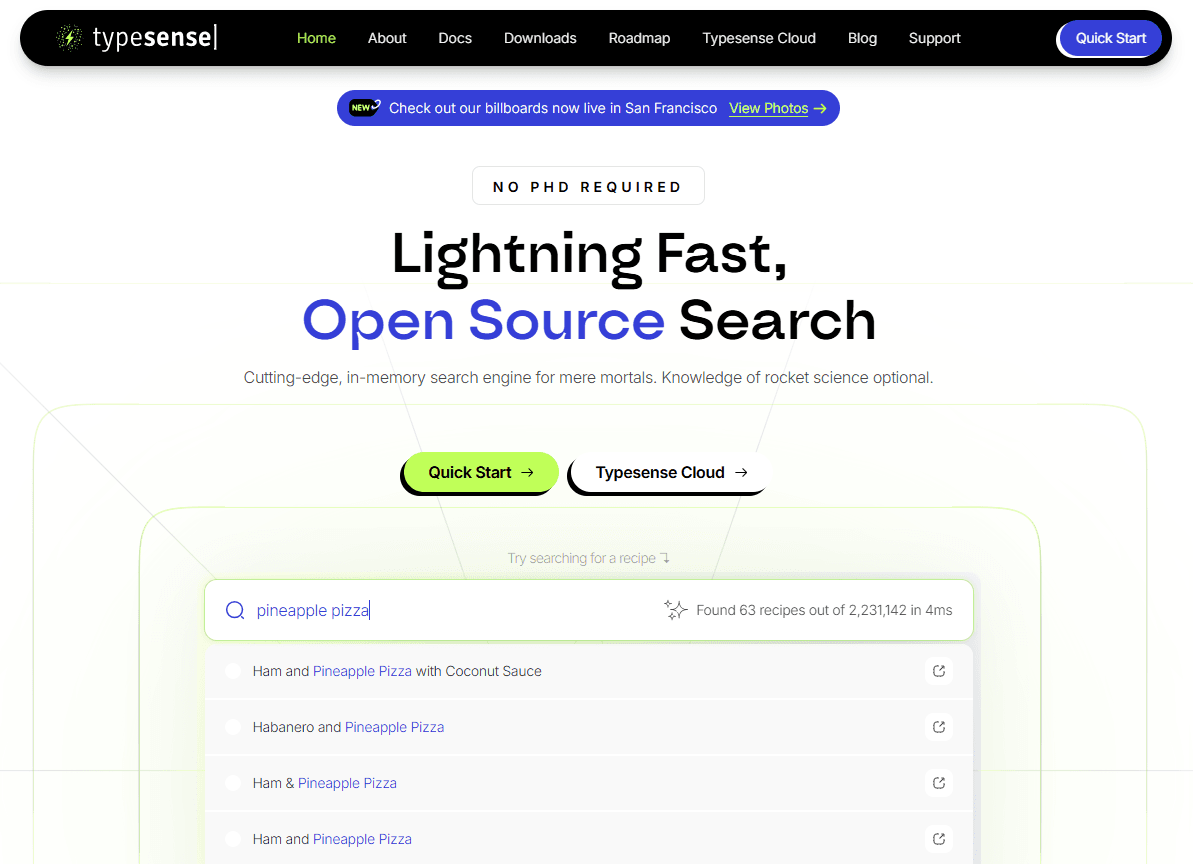
Typesense represents a refreshing simplicity in the search engine landscape. Built in C++ for maximum performance, it focuses on doing one thing exceptionally well: delivering fast, typo-tolerant search with minimal configuration.
The setup experience illustrates this philosophy perfectly. You can have Typesense running with Docker in minutes, define a collection with a simple schema, and start indexing documents immediately. No cluster configuration, no shard management, no JVM tuning. The defaults are sensible and work well for most use cases.
Performance is where Typesense truly shines. The promise of sub-50ms search latency isn't marketing speak; it's the consistent reality. By maintaining index structures in RAM and leveraging efficient C++ data structures, Typesense delivers this performance without complex caching layers or query optimization. Even with millions of documents, search remains lightning fast.
Typo tolerance exemplifies Typesense's developer-friendly approach. While Elasticsearch requires configuring fuzzy queries or ngram analyzers, Typesense handles typos automatically. Users can misspell words and still find what they're looking for, improving the search experience without additional development work.
The scoped API keys feature shows thoughtful design for real-world applications. You can generate keys that restrict access to specific collections or operations, enabling multi-tenant applications without complex security configurations. This is the kind of feature that saves weeks of development time.
Meilisearch leads in developer experience and AI innovation
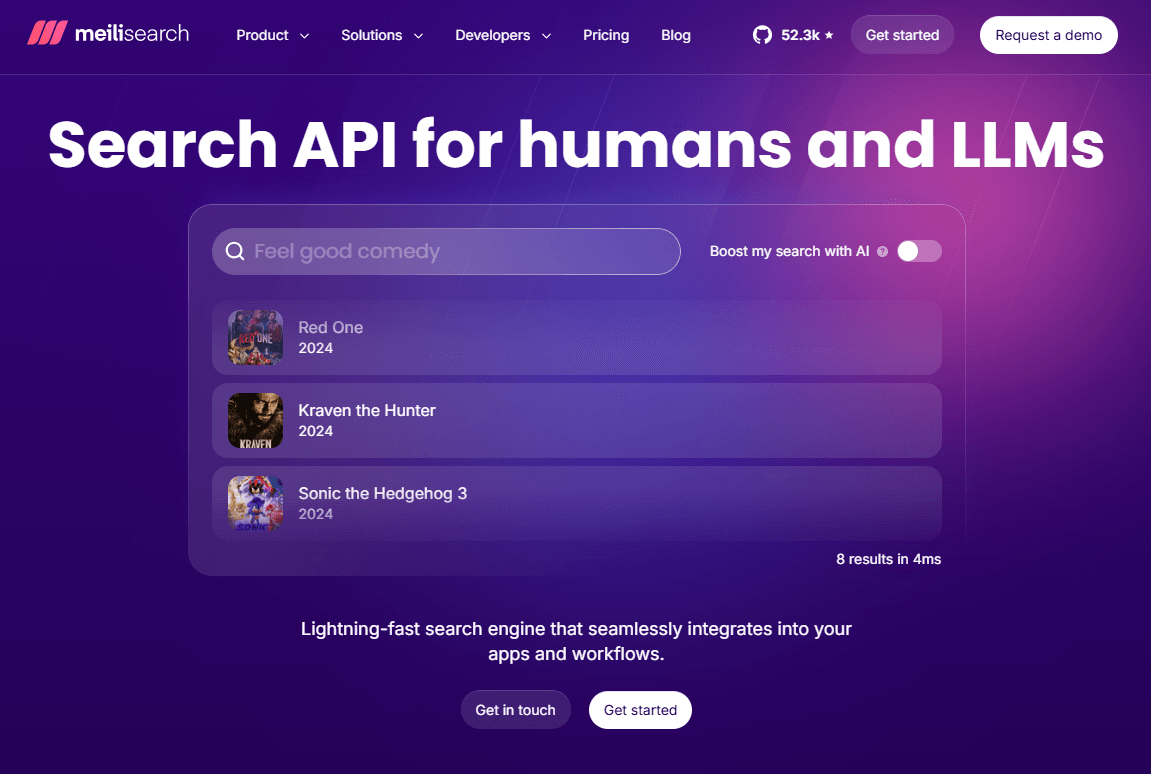
Meilisearch takes the simplicity philosophy even further while adding innovative features that position it at the forefront of modern search technology. Built in Rust, it combines memory safety with performance in a package that feels remarkably polished.
The developer experience is exceptional from the first interaction. The API is intuitive and consistent, the documentation is clear and comprehensive, and the web interface provides helpful visualizations of your search configuration. Error messages are actually helpful, explaining what went wrong and how to fix it.
What sets Meilisearch apart is its embrace of AI-powered search capabilities. While both Elasticsearch and Typesense have added vector search features, Meilisearch's hybrid search feels native to the platform. You can seamlessly combine traditional keyword search with semantic search powered by embeddings, delivering more relevant results for complex queries.
The automated embeddings feature showcases this integration. Configure Meilisearch with your OpenAI API key or Hugging Face model, and it automatically generates embeddings for your documents. The unified API means you don't need to manage separate systems for keyword and vector search. One query handles both, with a simple parameter controlling the balance.
Performance remains excellent, with the same promise of response times under 50 milliseconds, just like Typesense. But Meilisearch adds delightful touches like search-as-you-type that feels instantaneous, sophisticated ranking rules that deliver relevant results right from the start, and faceted search that makes it easy to build filtering interfaces.
The tenant tokens feature is particularly clever, solving multi-tenancy challenges elegantly. Instead of managing complex access controls, you generate JWT tokens that embed search filters, ensuring users only see their own data. It's secure, scalable, and simple to implement.
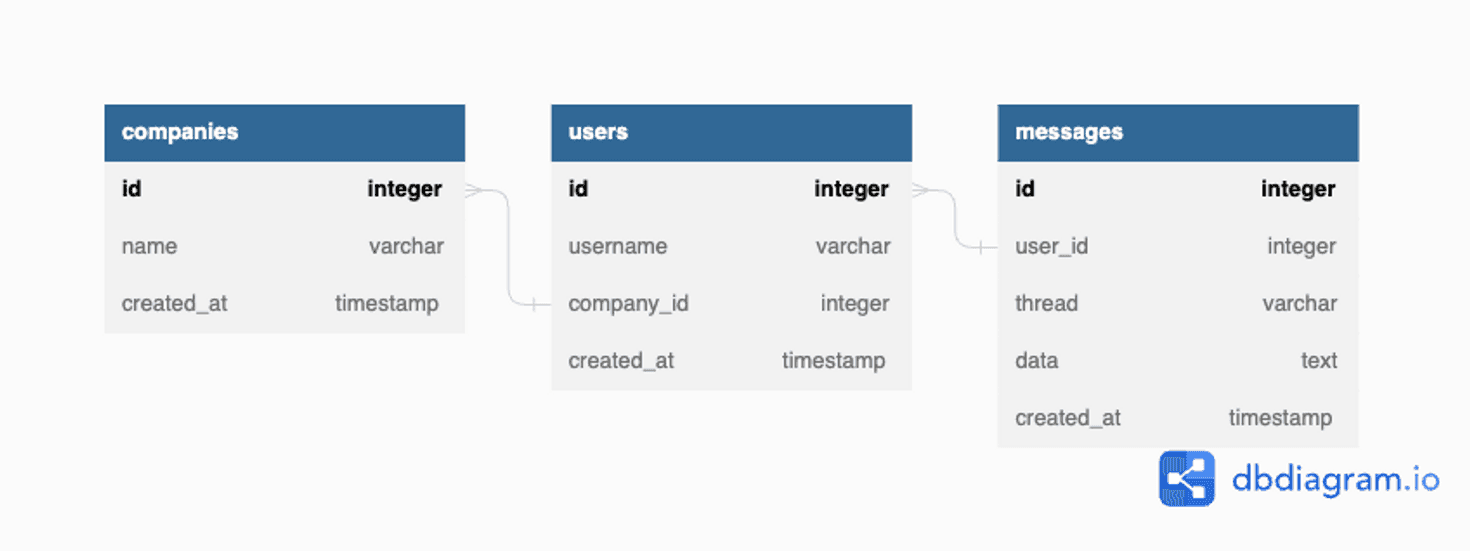
For now, Meilisearch remains committed to single-node deployments, with distributed capabilities actively under development. While it can handle impressive datasets (hundreds of millions of documents), it's not designed for Elasticsearch-scale deployments.
If building a delightful search experience quickly is more important than distributed architecture, see why developers love Meilisearch. Request a demo here!
Indexing and data management reveal core philosophies
How each engine handles data indexing reveals its fundamental design philosophy and target use case.
Elasticsearch's indexing process is powerful but complex. Documents are analyzed according to mappings that define field types, analyzers, and index settings. The inverted index structure, borrowed from Lucene, enables sophisticated full-text search and aggregations. But getting it right requires understanding analyzers, token filters, mapping types, and index settings. A misconfigured mapping can lead to poor search relevance or bloated index sizes.
The distributed nature adds another layer. Documents are routed to shards based on their ID, and you need to consider shard count, refresh intervals, and bulk indexing strategies. Real-time indexing is possible but requires balancing refresh rates with performance. The flexibility is immense. You can tune everything from merge policies to translog settings, but each option requires expertise to use effectively.
Typesense simplifies this dramatically. Collections have a straightforward schema defining field types. Documents are indexed immediately and become searchable in real-time by default. The system handles tokenization and normalization automatically, with sensible defaults for different field types. Autobatching of similar operations improves performance without manual optimization.
The trade-off is less flexibility. While Elasticsearch lets you define custom analyzers with specific tokenizers and filters, Typesense provides a more opinionated approach. For most applications, this is a benefit. You get good results without becoming a search expert.
Meilisearch strikes an elegant balance. The indexing process is asynchronous, providing a task queue that gives visibility into ongoing operations while keeping the API responsive. Smart defaults handle most cases beautifully, but you can customize searchable attributes, ranking rules, and filterable fields when needed.
The loosely typed documents in Meilisearch provide flexibility that Elasticsearch's strict mappings don't allow. You can add fields on the fly without updating schemas, making iterative development much smoother. While this can lead to inconsistencies if misused, it significantly reduces development friction.
Search features and relevance capabilities
All three engines provide powerful search capabilities, but their approaches to relevance and features differ significantly.
Elasticsearch offers the most comprehensive query DSL, supporting everything from simple match queries to complex bool queries with multiple clauses. The flexibility is unmatched. You can implement custom scoring functions, use script scoring, and combine queries in sophisticated ways. Aggregations enable powerful analytics beyond simple search.
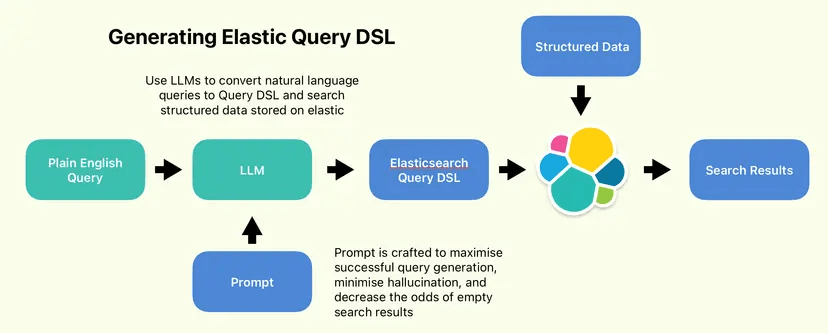 Source: Elastic
Source: Elastic
But this power requires expertise. Understanding the difference between match and term queries, when to use phrase matching, and how to implement effective fuzzy search requires study and experimentation. The default BM25 scoring works well, but tuning relevance often involves adjusting field weights, using function scores, and understanding tf-idf calculations.
Typesense provides a more focused feature set optimized for user-facing search. The ranking is based on a tie-breaking algorithm considering text matches, typo distance, and custom fields. It's predictable and easy to understand. Features like synonyms, curation rules, and dynamic sorting work intuitively without deep configuration.
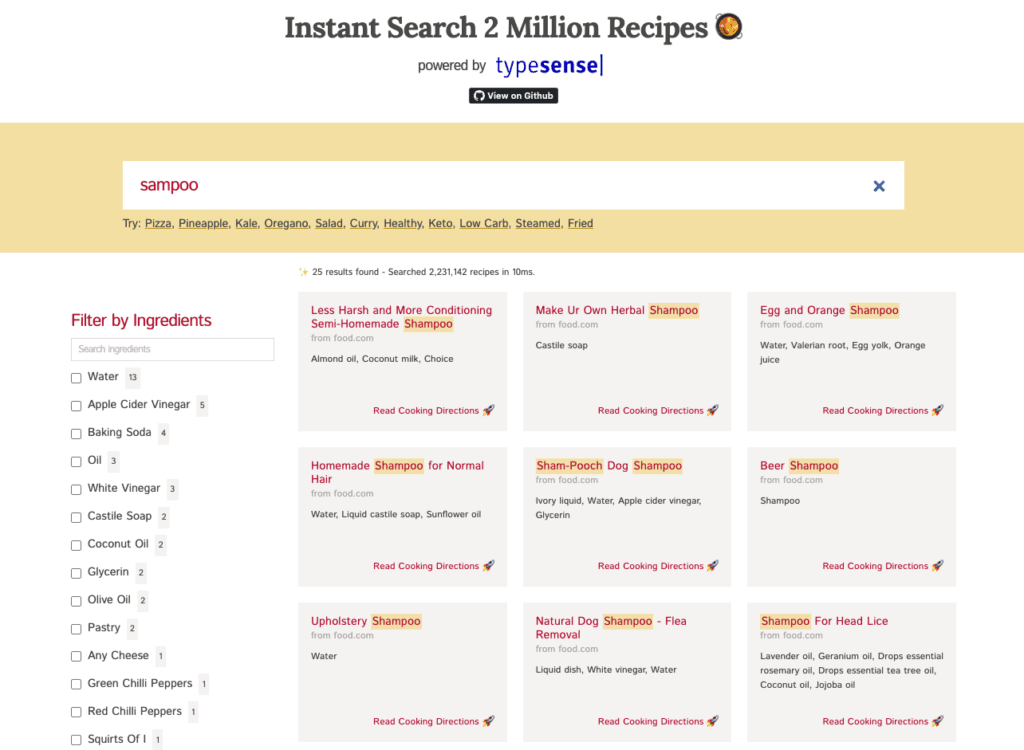 Source: Fresh Consulting
Source: Fresh Consulting
The natural language search capability, powered by LLMs, showcases Typesense's modern approach. Instead of complex query parsing, you can let an AI model translate natural language into structured searches. It's a glimpse of how search interfaces are evolving.
Meilisearch excels at delivering relevant results with minimal configuration. The default ranking rules, considering word matches, typo count, proximity, and attribute importance, produce excellent results for most use cases. The ability to reorder these rules or add custom ones provides flexibility without overwhelming complexity.
The AI-powered hybrid search in Meilisearch feels like the future of search. By seamlessly blending keyword and semantic search, it handles both precise queries and conceptual searches elegantly. The ability to adjust the semantic ratio with a simple parameter makes it easy to tune for your specific use case.
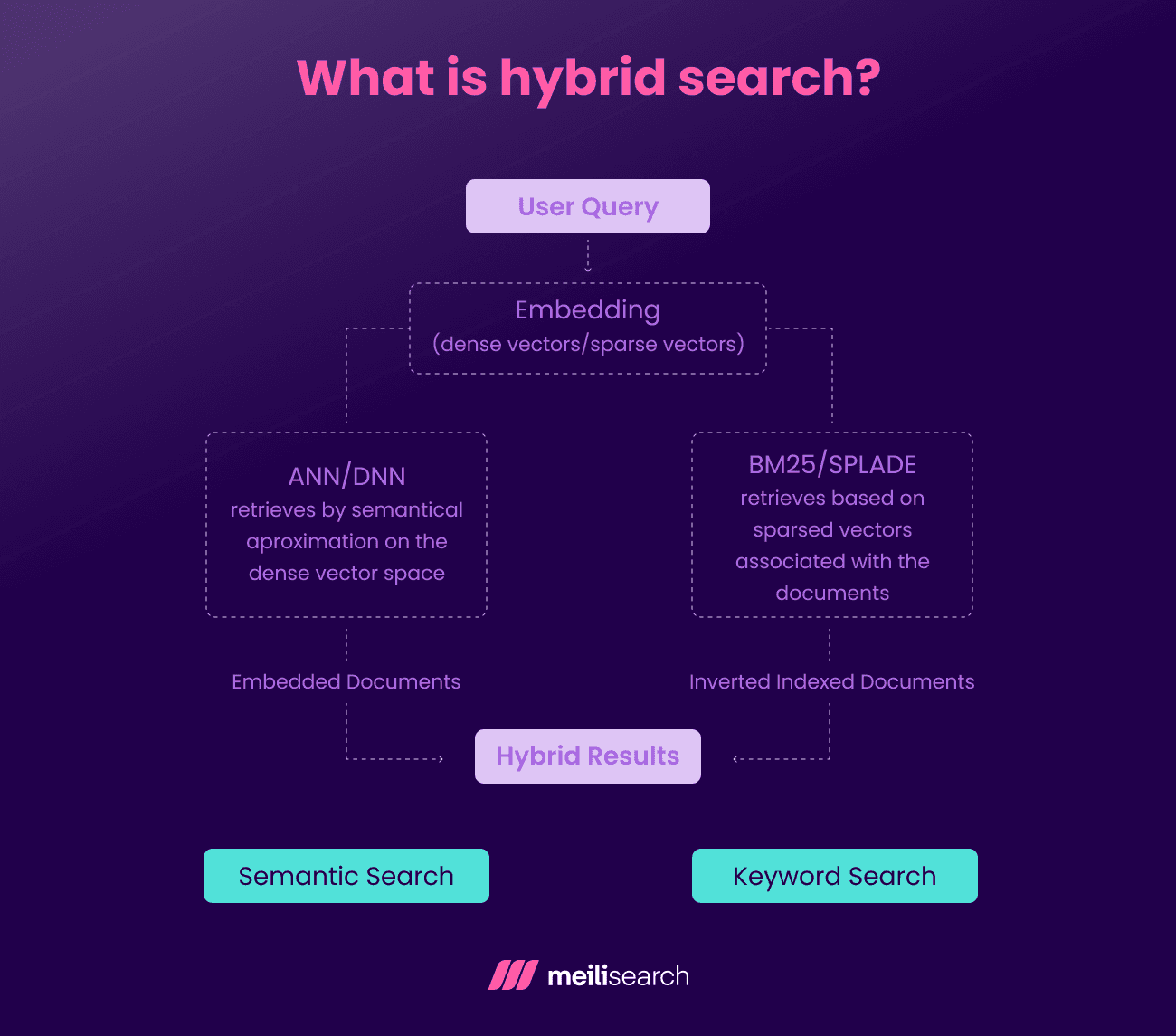
All three support essential features like filtering, faceting, and highlighting. But the implementation philosophy differs. Elasticsearch provides maximum flexibility and power, Typesense focuses on common use cases with great defaults, and Meilisearch emphasizes an intuitive API with innovative features.
Operational overhead and learning curves
The day-to-day reality of running these search engines varies dramatically, and this often becomes the deciding factor for teams.
Operating Elasticsearch in production is a significant undertaking. You need to monitor cluster health, manage index lifecycle, handle version upgrades, and plan capacity. The JVM requires tuning for garbage collection and heap sizing. Security needs configuration. Backups need automation. When issues arise, debugging might involve analyzing slow logs, profiling queries, or understanding why shards are relocating.
The learning curve is correspondingly steep. A developer new to Elasticsearch might spend weeks just understanding the basics of indexing and searching. Mastering cluster management, performance optimization, and advanced features can take months or years. Many teams find they need to hire specialists or invest in extensive training.
Typesense and Meilisearch dramatically reduce this operational burden compared to Elasticsearch. Typesense's HA cluster mode, while adding some complexity, remains far simpler than managing an Elasticsearch cluster. Meilisearch keeps things even simpler with its single-node architecture. Both eliminate JVM overhead entirely, offer straightforward upgrades, and focus monitoring on simple metrics like memory usage and query latency rather than complex cluster dynamics
The learning curve reflects this simplicity. A developer can be productive with either Typesense or Meilisearch in hours, not weeks. The APIs are intuitive, the documentation is clear, and the default behaviors are sensible. You spend time building features rather than managing infrastructure.
This doesn't mean operations are trivial. You still need backups, monitoring, and capacity planning. But the complexity is an order of magnitude lower. For teams without dedicated search infrastructure expertise, this difference is transformative.
Pricing models and total cost of ownership
While all three engines are open source, the total cost of ownership varies significantly based on your deployment model and scale.
Elasticsearch's costs can escalate quickly. The infrastructure requirements for a production cluster of multiple nodes for high availability, sufficient memory for heap and filesystem cache, and fast SSDs for performance add up. Elastic Cloud pricing starts at reasonable levels but grows substantially with data volume and feature requirements. Many organizations find themselves paying five or six figures annually for larger deployments.
The hidden costs are substantial. Expertise is expensive, whether hiring specialized engineers or consultants. The operational overhead translates to engineering time. Complex migrations and upgrades can require significant planning and downtime.
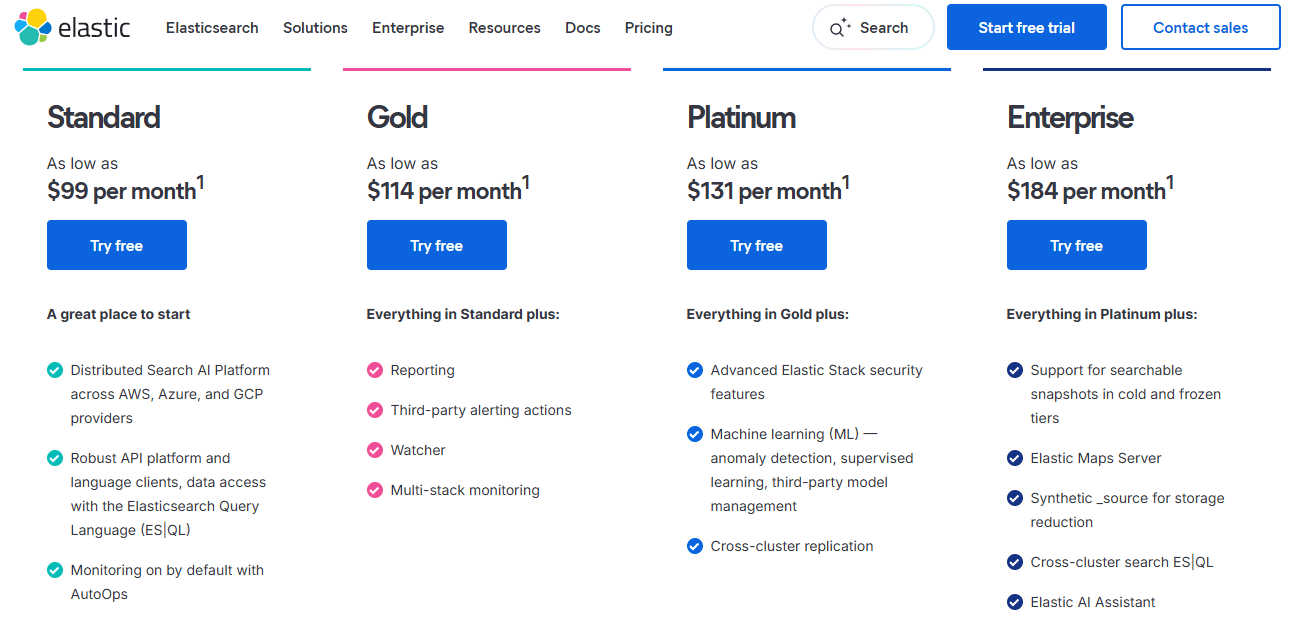
Typesense Cloud offers more predictable pricing with a resource-based model. You pay for memory and CPU allocation rather than document count or searches. This can be very cost-effective for applications with large catalogs but moderate query volume. The infrastructure requirements for self-hosting are also modest. A single well-provisioned server can handle impressive workloads.
Meilisearch Cloud uses a similar model with included search and document quotas. The pricing tiers are straightforward, with clear overage costs. For many applications, the costs remain reasonable even at scale. Self-hosting requires similar resources to Typesense.
We have launched a new resource-based pricing model. Contact our team to learn more and get started.

The real cost difference comes from operational overhead. The simplicity of Typesense and Meilisearch means less engineering time spent on search infrastructure. Faster development cycles mean quicker time to market. Lower complexity reduces the risk of costly outages or performance issues.
For small to medium applications, Typesense or Meilisearch often provide 80% of Elasticsearch's functionality at 20% of the total cost. For large-scale deployments where Elasticsearch's distributed architecture is necessary, the costs are justified by capabilities that simply aren't available in single-node solutions.
Which search engine should you choose?
The choice between these search engines depends on your specific requirements, team capabilities, and growth trajectory.
Choose Elasticsearch if:
- You need to search billions of documents across a distributed infrastructure
- Your use case extends beyond search to log analytics, metrics, or security monitoring
- You have dedicated engineers with Elasticsearch expertise or budget to hire them
- High availability and horizontal scalability are non-negotiable requirements
- You need the flexibility to customize every aspect of search behavior
- You're already invested in the Elastic Stack ecosystem
Choose Typesense if:
- You want powerful search capabilities without operational complexity
- Your dataset fits comfortably on a single server (millions of documents)
- Typo tolerance and speed are critical for your user experience
- You prefer predictable, resource-based pricing over usage-based models
- Your team wants to focus on building features rather than managing infrastructure
- You need features like natural language search powered by AI
Choose Meilisearch if:
- Developer experience and API simplicity are top priorities
- You want cutting-edge features like hybrid search that combines keywords and semantics
- Your application would benefit from search-as-you-type with instant results
- You value excellent documentation and community support
- You're building modern applications that might leverage AI-powered search
- You want the best possible search relevance out of the box
The key insight is that for many applications, the simplicity and focus of Typesense or Meilisearch provide a better overall solution than Elasticsearch's power and complexity. Unless you specifically need distributed search at massive scale, the operational overhead of Elasticsearch is hard to justify.
Between Typesense and Meilisearch, the choice often comes down to specific features and developer preference. Both deliver excellent performance and ease of use. Typesense has a slight edge in configuration flexibility and multi-tenant features. Meilisearch leads in developer experience and AI-powered search capabilities.
Ready to build better search experiences? Explore Elasticsearch for enterprise scale, Typesense for blazing-fast simplicity, or Meilisearch for the ultimate developer experience.

